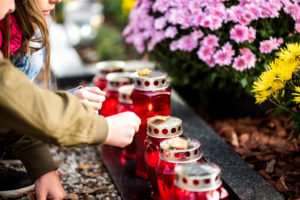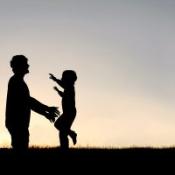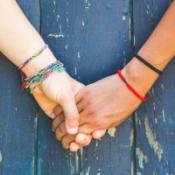 Marked on November 20 each year, Transgender Day of Remembrance is an opportunity for individuals and communities to remember and honor those who have been killed as a result of gender-based discrimination. In 2017, at least 25 transgender people in the United States were shot or killed by other violent means. This number is up from 2016’s total of at least 23 transgender individuals killed in the U.S., which had been the most ever recorded.
Marked on November 20 each year, Transgender Day of Remembrance is an opportunity for individuals and communities to remember and honor those who have been killed as a result of gender-based discrimination. In 2017, at least 25 transgender people in the United States were shot or killed by other violent means. This number is up from 2016’s total of at least 23 transgender individuals killed in the U.S., which had been the most ever recorded.
These numbers are only estimates, given how difficult it can be to know a person’s gender identity at the time of their death, and data is not always accurate or reliable when it comes to statistics that relate to the LGBTQ+ community as a whole. In addition, these numbers do not include deaths by suicide or health-related deaths. Still, the Human Rights Campaign reports incidents of violent discrimination against the trans community are on the rise.
What Are Transgender and Gender-Variant Identities?
Transgender Day of Remembrance, or TDOR, recognizes individuals of all gender-variant identities, as well as those whose identities have been perceived as trans or gender-variant, whose lives have been lost due to their appearance or identities. Transgender means having a gender identity that differs from the sex assigned at birth. A transgender woman, for example, may have been born with male reproductive organs but has a gender identity of female and uses female pronouns.
Gender-variant individuals may be nonbinary, agender, gender nonconforming, or another identity outside of the male-female gender binary. Some, but not all intersex people may also identify as trans or gender-variant. A person might also be perceived as trans or gender-variant if their appearance does not conform to traditional ideas of feminine or masculine attire, behaviors, gait, beauty standards, and other factors.
Effects of Violence and Hate Crimes Against Trans Individuals
In 2016, nearly 95% of trans people murdered in the U.S. were people of color, and 85% of victims were women. Violence continues to disproportionately affect trans women and trans people of color over trans men and white trans people, but in general members of the trans community face a higher rate of violence and discrimination than almost any other group. A majority of trans people report having experienced verbal harassment and/or physical attacks because of hate.
The easiest way to recognize TDOR is to take steps to become more educated about gender identity and issues affecting the trans and broader LGBTQ+ communities.
Trans and gender-variant individuals also face discrimination related to employment status, health care, and social services. Because there remains stigma about non-cisgender identities (any identity for which a person’s gender does not match the sex assigned at birth), trans and gender-variant individuals are more likely to experience poverty, homelessness, and unemployment. Many also experience gender dysphoria or mental and/or physical health issues but avoid seeking counseling or therapy due to fear of facing prejudice or hate. Others may not be able to access therapy services, for any number of reasons.
All these issues combined can make it difficult for trans and gender-variant people to survive while meeting basic needs, such as housing and a reliable income, let alone live in good health without constant fear and unease.
How to Help
The easiest way to recognize TDOR is to take steps to become more educated about gender identity and issues affecting the trans and broader LGBTQ+ communities. GoodTherapy.org has many articles that can help you better understand trans identities and the challenges gender-variant people face.
You can also reach out to trans people in your life and let them know you support them and affirm their identities. You might even offer to take someone to an appointment, shop with them, or simply spend time together. Not all trans people have a robust support network, so sometimes the most helpful thing you can do is volunteer your time to make sure daily needs are being met and the person is able to spend their own resources on self-care.
Finally, you can donate to an organization that helps advocate for trans and LGBTQ+ people, search for local organizations in your area hosting volunteer opportunities to support trans people, or attend a vigil or other events honoring TDOR. Any of these activities can contribute to a world in which transgender people are not targeted or killed because of their identity.
Resources for Trans People, Allies, and Families
- American Foundation for Suicide Prevention: AFSP provides general resources about overcoming suicidal thoughts or tendencies, helping loved ones who experience suicidal thoughts, and supporting survivors who have lost loved ones to suicide.
- Human Rights Campaign: HRC is a global advocacy group committed to strengthening worldwide support for LGBTQ+ rights and helping ensure LGBTQ+ individuals are protected equally under law.
- GLAAD: With a mission of helping LGBTQ+ voices be heard, GLAAD works with media groups to share stories of trans and LGBTQ+ people and maintain equitable media treatment of the LGBTQ+ community.
- PFLAG: Parents and Friends of Lesbians and Gays exists to support not only LGBTQ+ people, but also their families and friends. Resources for individuals who might struggle with learning more about a loved one who is trans or gender-variant include peer-to-peer support.
- Trans People of Color Coalition: TPOCC is a group that amplifies stories of trans people of color and works to make sure issues that affect trans people of color are represented in the media.
- Trans Youth Equality Foundation: TYEF provides information about the trans community for youth and their families and advocates for trans youth in issues that threaten trans equality.
- Trevor Project: Founded to support LGBTQ+ youth, the Trevor Project is a nonprofit suicide prevention organization that offers a confidential phone service with trained counselors to talk with LGBTQ+ teens and adolescents considering suicide.
References:
- A matter of life and death: Fatal violence against transgender people in America 2016. (2016). Human Rights Campaign and Trans People of Color Coalition. Retrieved from https://assets.hrc.org//files/assets/resources/A-Matter-of-Life-and-Death-2016.pdf
- Haas, A. P., Rodgers, P. L., & Herman, J. L. (2014). Suicide attempts among transgender and gender non-conforming adults. American Foundation for Suicide Prevention. Retrieved from https://williamsinstitute.law.ucla.edu/wp-content/uploads/AFSP-Williams-Suicide-Report-Final.pdf
- Transgender Day of Remembrance. (2017). Human Rights Campaign. Retrieved from https://www.hrc.org/campaigns/transgender-day-remembrance
- Violence against the transgender community in 2017. (2017). Human Rights Campaign. Retrieved from https://www.hrc.org/resources/violence-against-the-transgender-community-in-2017
© Copyright 2017 GoodTherapy.org. All rights reserved.
The preceding article was solely written by the author named above. Any views and opinions expressed are not necessarily shared by GoodTherapy.org. Questions or concerns about the preceding article can be directed to the author or posted as a comment below.

 Research Examines Parental Acceptance of Transgender Kids
Research Examines Parental Acceptance of Transgender Kids What Does It Mean for a Transgender Person to Transition?
What Does It Mean for a Transgender Person to Transition? How to Support a Transgender Friend or Family Member
How to Support a Transgender Friend or Family Member